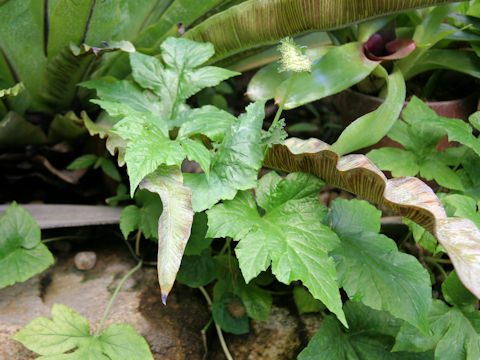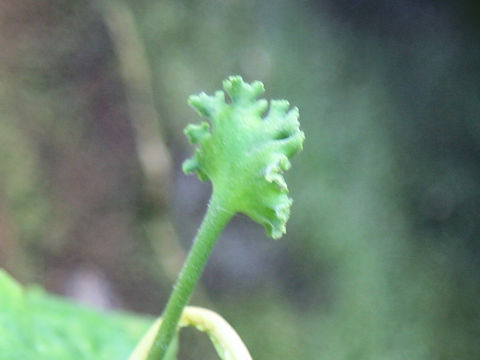
|
The Snakewort (Dorstenia contrajerva) belongs to Moraceae (the Mulberry family). It is an evergreen herb that is native to southern Mexico, Central America, the West Indies and northern South America. It grows in tropical rainforests, mangroves, savannas and mixed forests, and can grow to a height of around 40 cm. The rhizome spreads out like a creeper. The leaves are oblong to circular in shape, deeply divided and have long leaf stalks. Almost all year round, it produces a scape from the leaf axil, and at the tip of this scape it produces a green, disk-shaped receptacle, with small male and female flowers. The specific epithet is a Latinized version of the Spanish word "contrahierba", which refers to this plant. In Japanese, it is called "America-hana-guwa" (American flowered mulberry). It is said that the rhizome is sometimes used as a folk medicine for fever, diarrhea, and bites from poisonous snakes and insects, but it seems that it is dangerous to ingest the cardenolide cardiac glycoside contained in this root.
|

